
Roots
The quiet murmur of ancient wisdom often speaks volumes, particularly when it comes to practices passed down through generations for hair care. We stand at a curious point where the whispers of tradition meet the keen gaze of modern science. For many, especially those with textured hair, ancestral methods hold a deep personal resonance, extending beyond mere aesthetics to touch upon cultural identity and self-perception.
Yet, a deeper question often arises ❉ what precise scientific principles underpin these time-honored customs, affirming their efficacy for scalp vitality? The answer lies not in simple affirmation, but in a layered discovery of biological interactions, physiological responses, and environmental adaptations that validate practices once considered solely anecdotal.
Consider the simple act of oiling the scalp, a ritual observed across numerous cultures for centuries. This practice, often dismissed in Western beauty dialogues as merely a cosmetic indulgence, reveals a complex interplay with the scalp’s delicate ecosystem. The skin of the scalp, a vibrant landscape, harbors a diverse community of microorganisms, collectively known as the scalp microbiome.
This intricate web of bacteria, fungi, and other microscopic life forms plays a crucial role in maintaining dermal health and influencing hair growth cycles. When this microbial community falls out of balance, conditions such as dryness, irritation, and even hair thinning can arise.
Traditional hair care often finds its scientific grounding in the delicate balance of the scalp’s living ecosystem.

Hair Anatomy and Physiology for Textured Hair
The hair shaft, though appearing simple, presents a marvel of biological construction. Its primary component, Keratin, a fibrous protein, arranges itself in a specific helical structure, contributing to the hair’s strength and elasticity. For textured hair, this helical arrangement, particularly in the cortex, gives rise to its characteristic curls, coils, and waves.
The elliptical cross-section of textured hair strands, contrasting with the rounder shape of straight hair, contributes to its unique structural properties and its tendency to curl. This structural variation also means that textured hair often has more points along its length where the cuticle, the protective outer layer, is raised, making it more susceptible to moisture loss and mechanical damage.
Beneath the scalp’s surface lies the hair follicle, a miniature organ responsible for hair production. Each follicle contains a dermal papilla, a cluster of specialized cells that receive nutrients from blood vessels and signal to germinal matrix cells to produce new hair. The sebaceous glands, adjacent to the follicles, produce sebum, a natural oil that lubricates the scalp and hair.
The quantity and composition of sebum can vary significantly among individuals and ethnic groups, influencing scalp conditions and hair texture. For instance, some studies suggest that African hair may have a higher total lipid content compared to Caucasian hair, regardless of gender.

How Follicular Structure Differs
The distinct shape of textured hair follicles, often curved or S-shaped, causes the hair strand to grow in a spiraling manner. This curvature means that sebum, the scalp’s natural oil, does not travel down the hair shaft as easily as it might on straight hair. Consequently, textured hair can experience dryness more readily along its length, while the scalp itself may still produce adequate or even abundant sebum. This inherent characteristic underscores why traditional practices often emphasize direct scalp oiling and conditioning of the hair shaft, aiming to compensate for this natural distribution challenge.
- Follicle Shape ❉ The curved follicle in textured hair leads to its characteristic curl pattern.
- Sebum Distribution ❉ Natural oils struggle to travel down the curved hair shaft, leading to drier strands.
- Cuticle Integrity ❉ The frequent bends in textured hair can cause the cuticle to lift, increasing susceptibility to damage.

Hair Growth Cycles and Influencing Factors
Hair growth proceeds through distinct phases ❉ anagen (growth), catagen (transition), and telogen (resting). The anagen phase, where active hair production occurs, can last for several years, determining the ultimate length a hair strand can achieve. Traditional practices, through their emphasis on gentle handling and scalp stimulation, can indirectly support the anagen phase by creating an environment conducive to healthy follicular activity. Stress, nutritional deficiencies, hormonal shifts, and even certain medications can disrupt these cycles, leading to premature shedding or thinning.
Environmental elements, including humidity levels and exposure to pollutants, also play a part in scalp health and hair integrity. Traditional hair care often accounts for these external pressures, offering protective styles or natural treatments that shield the hair and scalp from harsh conditions. The very act of protecting hair, a cornerstone of many traditional practices, directly addresses the need to preserve the anagen phase and minimize breakage.
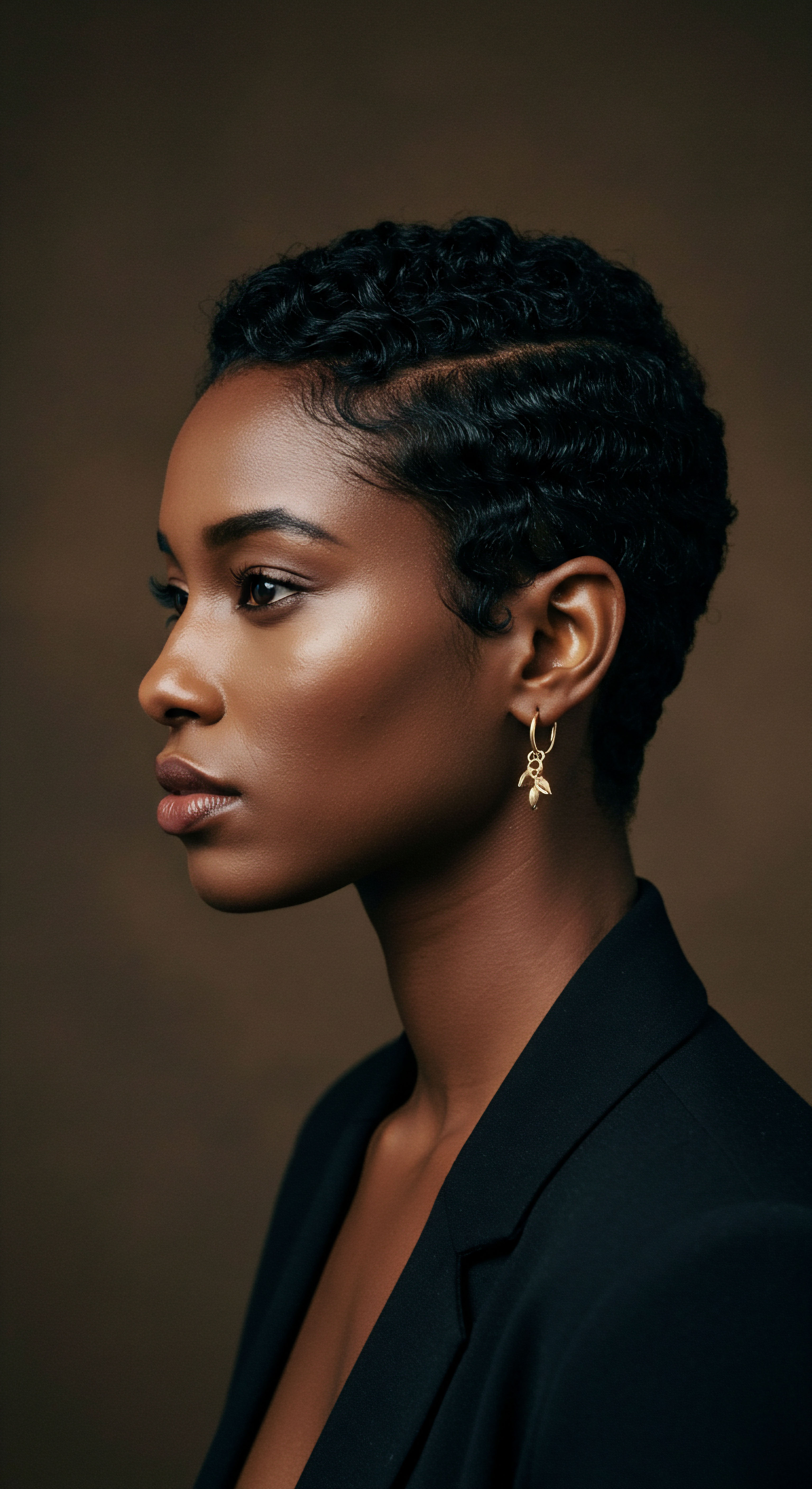
Does Scalp Stimulation Influence Hair Growth Cycles?
The physical manipulation of the scalp, a common element in traditional hair care through massage or gentle brushing, is thought to stimulate blood flow to the hair follicles. Increased circulation brings more oxygen and nutrients to the dermal papilla cells, which are essential for hair growth. While the scientific community has debated the extent of this effect, some research suggests a positive correlation. A study conducted in 2016, for instance, found that standardized scalp massage resulted in increased hair thickness by inducing stretching forces to dermal papilla cells in the subcutaneous tissue.
This small study, involving nine men who received daily 4-minute scalp massages for 24 weeks, observed a measurable increase in hair thickness. This finding, while from a limited cohort, points towards a mechanical principle where physical stimulation may indeed play a supportive role in follicular health.
This mechanical stimulation, often performed during cleansing or oil application in traditional routines, could therefore contribute to the overall vitality of the scalp, potentially extending the active growth phase or improving the quality of the hair produced. The regular, gentle pressure could also help to loosen dead skin cells and product buildup, creating a cleaner environment for the follicles.

Ritual
To consider the enduring appeal of traditional hair care is to acknowledge a practical wisdom that resonates deeply within our daily lives. These practices, often repeated with a quiet devotion, are more than simple routines; they are systematic approaches to care, refined over generations. The transition from understanding hair’s foundational biology to applying this knowledge in actionable ways is where ritual finds its voice. It speaks to the techniques and methods that have shaped countless hair journeys, offering gentle guidance and proven results.
Many traditional hair care customs involve specific methods of cleansing, conditioning, and styling that directly support scalp health. The choice of ingredients, often plant-based and locally sourced, reflects an intuitive grasp of their beneficial properties long before modern chemistry isolated their active compounds. The methods of application, from warm oil treatments to herbal rinses, often align with principles of absorption, gentle removal of impurities, and maintenance of the scalp’s protective barrier.
Daily practices, refined through generations, form a systematic approach to hair care, connecting tradition with practical wisdom.

Protective Styling Principles
Protective styles, such as braids, twists, and cornrows, are cornerstones of textured hair care across many cultures. These styles serve a scientific purpose by minimizing manipulation of the hair strands, thereby reducing mechanical stress and breakage. When hair is left loose, it is more susceptible to friction from clothing, environmental elements, and daily styling, which can lead to weakened cuticles and split ends. By securing the hair in a contained style, its delicate structure is shielded.
Furthermore, protective styles help to maintain the hair’s moisture levels. The natural oils and conditioning products applied to the hair before styling are less exposed to air, which can otherwise cause rapid evaporation. This prolonged hydration is especially beneficial for textured hair, which tends to be naturally drier due to its structural characteristics and the way sebum distributes along its length. The scalp, while covered, still benefits from the reduced need for frequent product application and manipulation, allowing its natural balance to stabilize.

How Do Protective Styles Aid Scalp Health?
Beyond safeguarding the hair shaft, protective styles can contribute to scalp vitality by creating a stable environment. The reduction in daily combing and brushing means less physical abrasion to the scalp surface. This lessened interference allows the scalp’s natural microbial community to maintain its equilibrium, as fewer external factors disrupt its delicate balance. A healthy scalp microbiome, as research increasingly suggests, plays a significant part in warding off conditions like dandruff and irritation.
Moreover, certain protective styles, particularly those that allow for easy access to the scalp, facilitate direct application of nourishing treatments. This targeted approach ensures that oils, serums, or herbal concoctions reach the scalp skin directly, where they can deliver their beneficial compounds to the follicles and surrounding tissues. This method can be more effective than relying on products to travel down the hair shaft to the scalp.
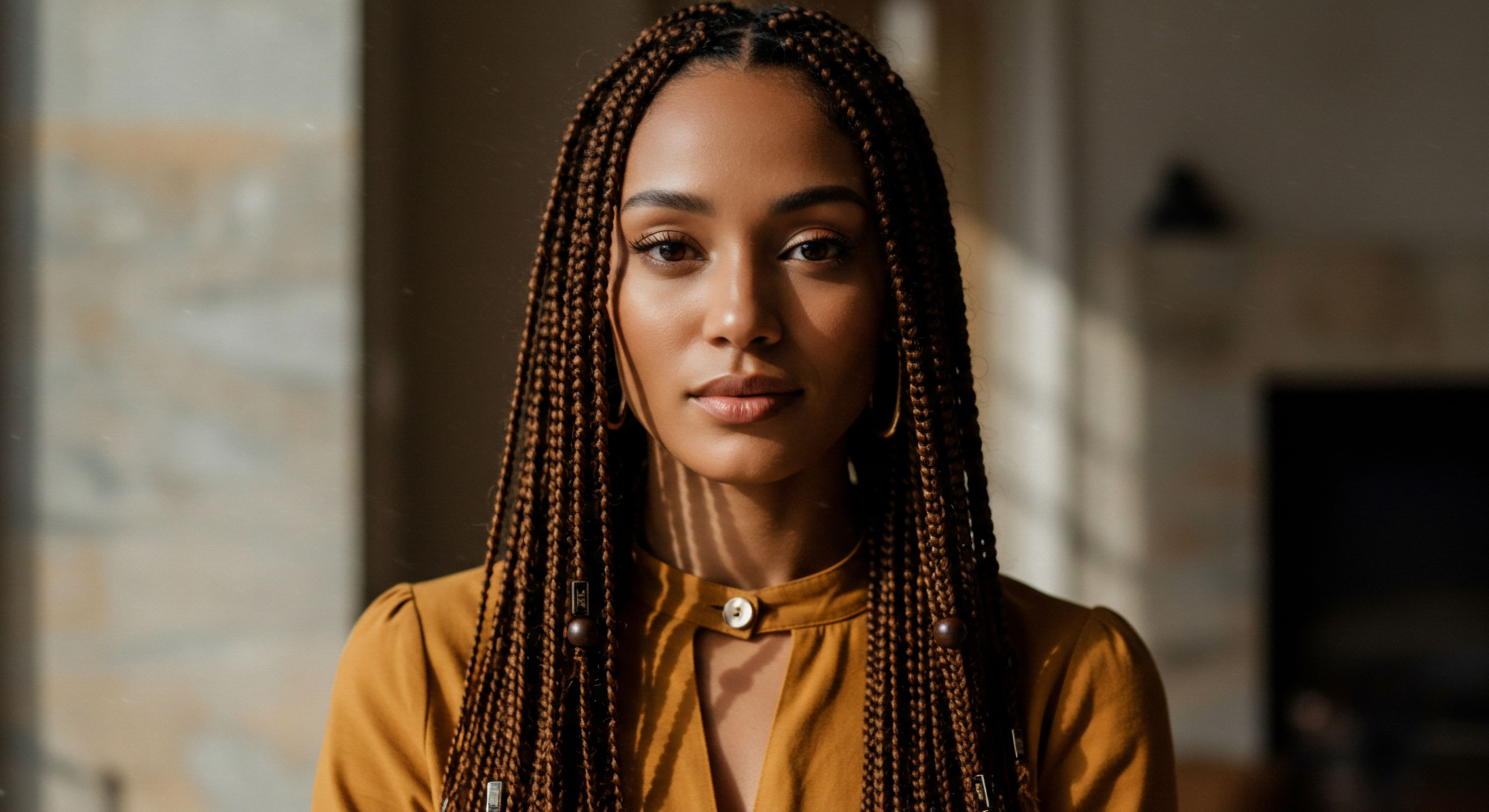
Natural Styling and Definition Techniques
Many traditional techniques for defining textured hair, such as finger coiling, twisting, or braiding, rely on manipulating the hair in its natural state, often with water and emollients. The scientific principle at play here relates to the hydrogen bonds within the hair’s keratin structure. Water temporarily breaks these bonds, allowing the hair to be reshaped.
As the hair dries, these bonds reform, locking the new shape in place. This method avoids the use of heat, which can cause irreversible damage to the keratin proteins and the hair’s cuticle, leading to dryness and breakage over time.
The application of natural gels, butters, and oils during these processes also serves a scientific function. These substances provide slip for easier manipulation, reduce friction between strands, and form a protective barrier that seals in moisture as the hair dries. This barrier minimizes water loss from the hair shaft, keeping it supple and resilient.
| Hair Component Keratin Proteins |
| Scientific Principle Hydrogen bond reformation upon drying |
| Traditional Practice Impact Water-based styling for natural curl definition, avoiding heat damage |
| Hair Component Cuticle Layer |
| Scientific Principle Protective barrier against external stressors |
| Traditional Practice Impact Protective styles reduce abrasion; oils smooth and seal cuticles |
| Hair Component Sebaceous Glands |
| Scientific Principle Produce sebum for lubrication |
| Traditional Practice Impact Scalp oiling supplements natural sebum distribution for dry hair |
| Hair Component Hair Follicle |
| Scientific Principle Site of hair growth and nutrient uptake |
| Traditional Practice Impact Scalp massage stimulates blood flow and nutrient delivery |
| Hair Component Understanding these principles deepens our appreciation for traditional hair care. |
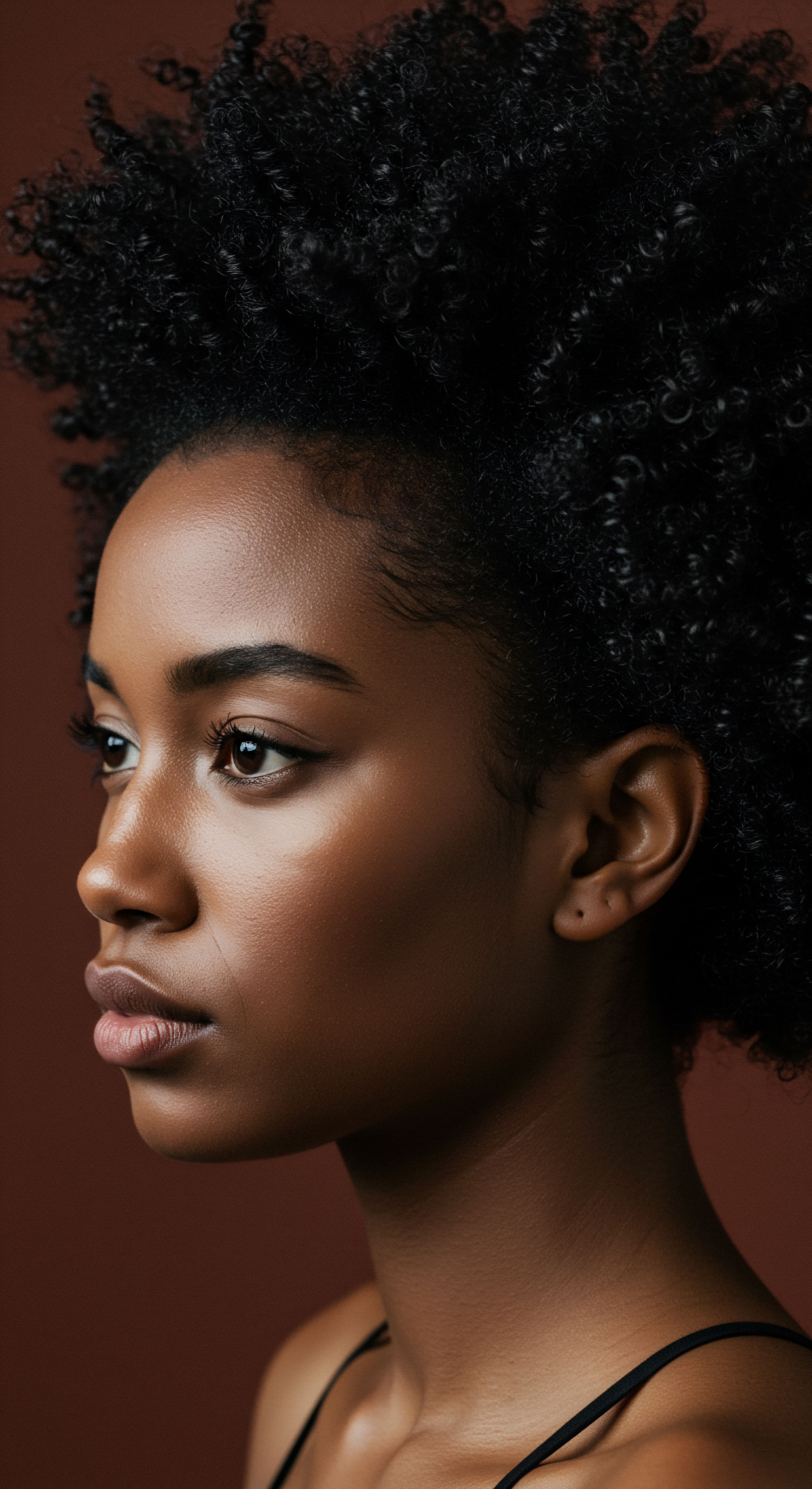
The Nighttime Sanctuary Essential Sleep Protection
The practice of covering hair at night, commonly with bonnets, scarves, or pillowcases made of satin or silk, extends beyond simple preservation of a hairstyle. Scientifically, this ritual addresses the mechanical friction that occurs between hair and common bedding materials like cotton. Cotton, with its absorbent and coarse fibers, can draw moisture from the hair, leading to dryness. It also creates significant friction, which can cause the hair’s cuticle to lift, resulting in frizz, tangles, and ultimately, breakage.
Satin and silk, by contrast, possess smooth, tightly woven fibers that minimize friction. This allows hair to glide over the surface without snagging or pulling, preserving the integrity of the hair shaft and reducing mechanical damage. Furthermore, these materials are less absorbent than cotton, meaning they do not strip the hair of its natural oils or applied products, thereby helping to maintain moisture levels throughout the night. This consistent hydration and reduced friction contribute significantly to the hair’s long-term health and resilience.
- Material Choice ❉ Satin and silk minimize friction and moisture absorption.
- Hair Integrity ❉ Reduces breakage, frizz, and tangles by preserving the cuticle.
- Moisture Retention ❉ Helps hair retain natural oils and applied products overnight.

Relay
How might the quiet rhythms of traditional hair care practices resonate with the complex, unseen world of our scalp’s living surface? As we consider the profound interplay between ancestral wisdom and modern scientific understanding, a more sophisticated inquiry emerges. It invites us to look beyond superficial observations and delve into the intricate biological, cultural, and environmental factors that shape scalp vitality. This section aims to bridge that space, drawing on research and data to illuminate the deeper scientific validation behind time-honored traditions, particularly for textured hair.
The very act of maintaining scalp health, often a central tenet of traditional hair care, is now recognized as a complex biological dance. Our scalp is not merely a passive canvas for hair growth; it is a dynamic environment, home to a unique microbial community that significantly influences its well-being. When this delicate balance is disrupted, issues ranging from mild irritation to more persistent conditions can arise. Traditional practices, often relying on natural ingredients and gentle applications, appear to intuitively support this microbial equilibrium, a principle that modern science is only beginning to fully appreciate.
Traditional practices intuitively support the scalp’s microbial balance, a scientific principle gaining modern recognition.

The Scalp Microbiome and Traditional Ingredients
The scalp microbiome, a complex community of bacteria, fungi, and viruses, plays a crucial role in maintaining scalp health. A balanced microbiome acts as a protective shield, helping to defend against pathogens and regulate inflammatory responses. Dysbiosis, an imbalance in this microbial community, can lead to various scalp conditions, including dandruff, seborrheic dermatitis, and even contribute to hair loss.
Traditional hair care often incorporates natural oils and herbal extracts, which may influence this microbial landscape in beneficial ways. For example, coconut oil, a staple in many traditional routines, has been shown to have antimicrobial properties that can help manage the proliferation of certain fungi associated with dandruff, such as Malassezia. A study indicated that the abundance of uncultured Malassezia species, which are more prevalent in dandruff-affected scalps (25.26%) compared to healthy scalps (14.44%), decreased by 6.89% in dandruff-affected scalps after the application of coconut oil. This suggests a scientific basis for its traditional use in scalp treatments.

Do Traditional Practices Influence Scalp Microbes?
Indeed, the gentle cleansing and nourishing practices found in traditional hair care, which often prioritize natural ingredients over harsh chemicals, can support a healthier scalp microbiome. Many commercial shampoos and conditioners contain strong detergents and biocides that, while effective at cleansing, can indiscriminately strip away beneficial microorganisms alongside unwanted ones. This disruption can destabilize the natural microbial culture of the scalp. Traditional methods, by contrast, frequently utilize milder cleansers or co-washing techniques that are less disruptive to the resident microbial populations.
Furthermore, the use of botanical extracts and natural clays, common in traditional hair washes and masks, can introduce beneficial compounds that nourish specific bacterial species or inhibit the growth of pathogenic ones, without causing widespread microbial imbalance. This approach stands in contrast to the often broad-spectrum antimicrobial action of synthetic ingredients, which can inadvertently harm the very microbes that contribute to scalp resilience.
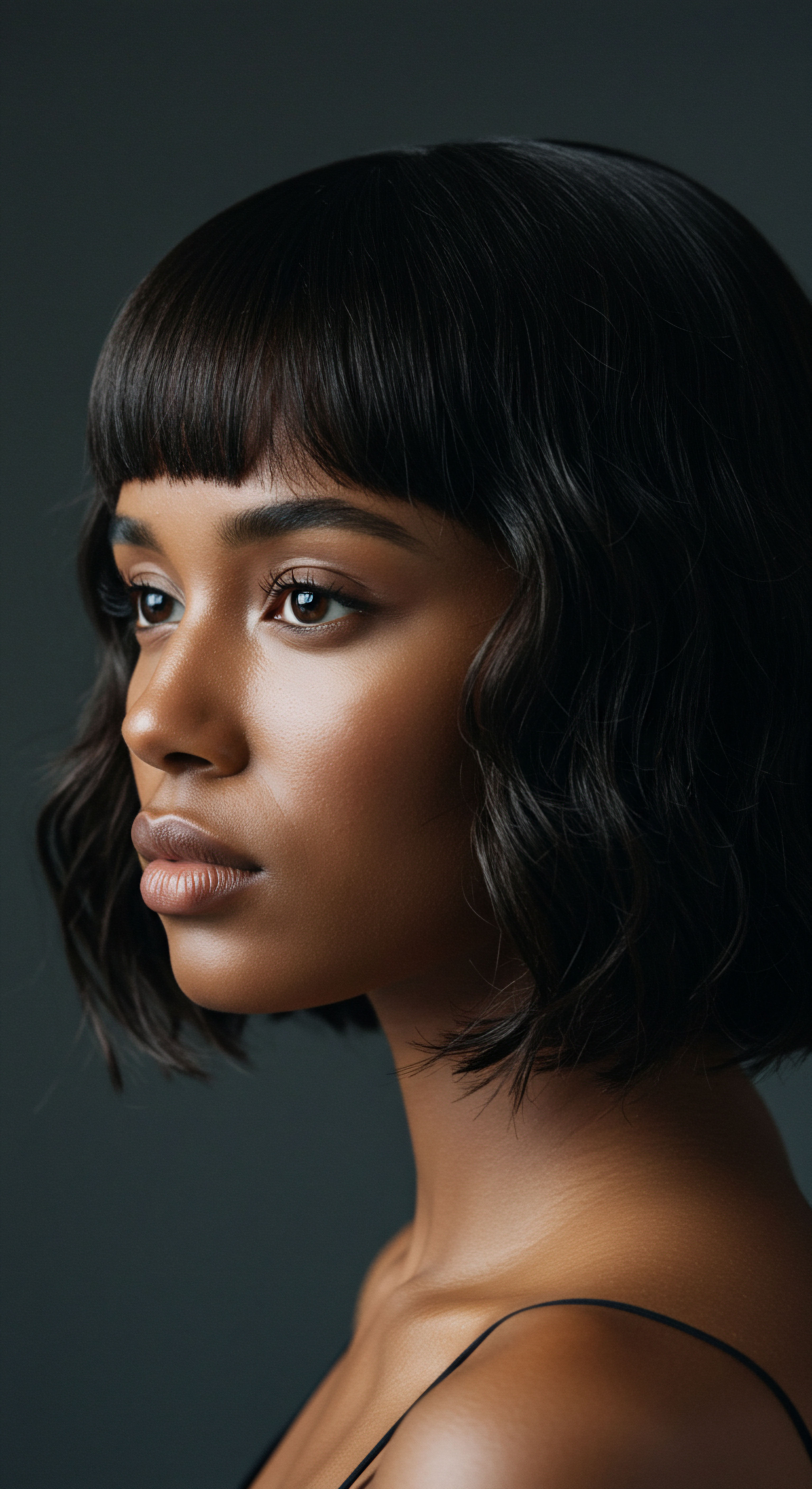
Holistic Influences on Hair Health
The scientific validation of traditional hair care extends beyond topical applications to encompass a broader understanding of overall well-being. Many traditional systems of medicine, such as Ayurveda and Traditional Chinese Medicine, approach hair health as an indicator of systemic balance. This holistic perspective, once viewed as purely philosophical, now finds echoes in modern scientific understanding of the gut-skin-hair axis, stress physiology, and nutritional science.
For example, dietary considerations, a central tenet in traditional health systems for hair vitality, are increasingly supported by nutritional science. Deficiencies in certain vitamins (like B vitamins, vitamin D), minerals (iron, zinc), and proteins can significantly impact hair growth and scalp condition. Traditional diets, often rich in whole foods, herbs, and fermented ingredients, may inadvertently provide these essential nutrients in forms that are highly bioavailable.
| Nutrient Type B Vitamins (Biotin, B5, B6) |
| Role in Hair/Scalp Health Support keratin synthesis, cellular metabolism in follicles |
| Traditional Dietary Source Examples Whole grains, legumes, leafy greens, eggs, fermented foods |
| Nutrient Type Iron |
| Role in Hair/Scalp Health Oxygen transport to hair follicles |
| Traditional Dietary Source Examples Red meat, lentils, spinach (often paired with Vitamin C in traditional diets for absorption) |
| Nutrient Type Zinc |
| Role in Hair/Scalp Health Cell growth and repair, sebum regulation |
| Traditional Dietary Source Examples Nuts, seeds, legumes, certain seafood |
| Nutrient Type Omega-3 Fatty Acids |
| Role in Hair/Scalp Health Anti-inflammatory, scalp hydration |
| Traditional Dietary Source Examples Flaxseed oil, fatty fish (where available), some nuts |
| Nutrient Type A balanced diet, often a component of traditional wellness, provides essential nutrients for hair vitality. |
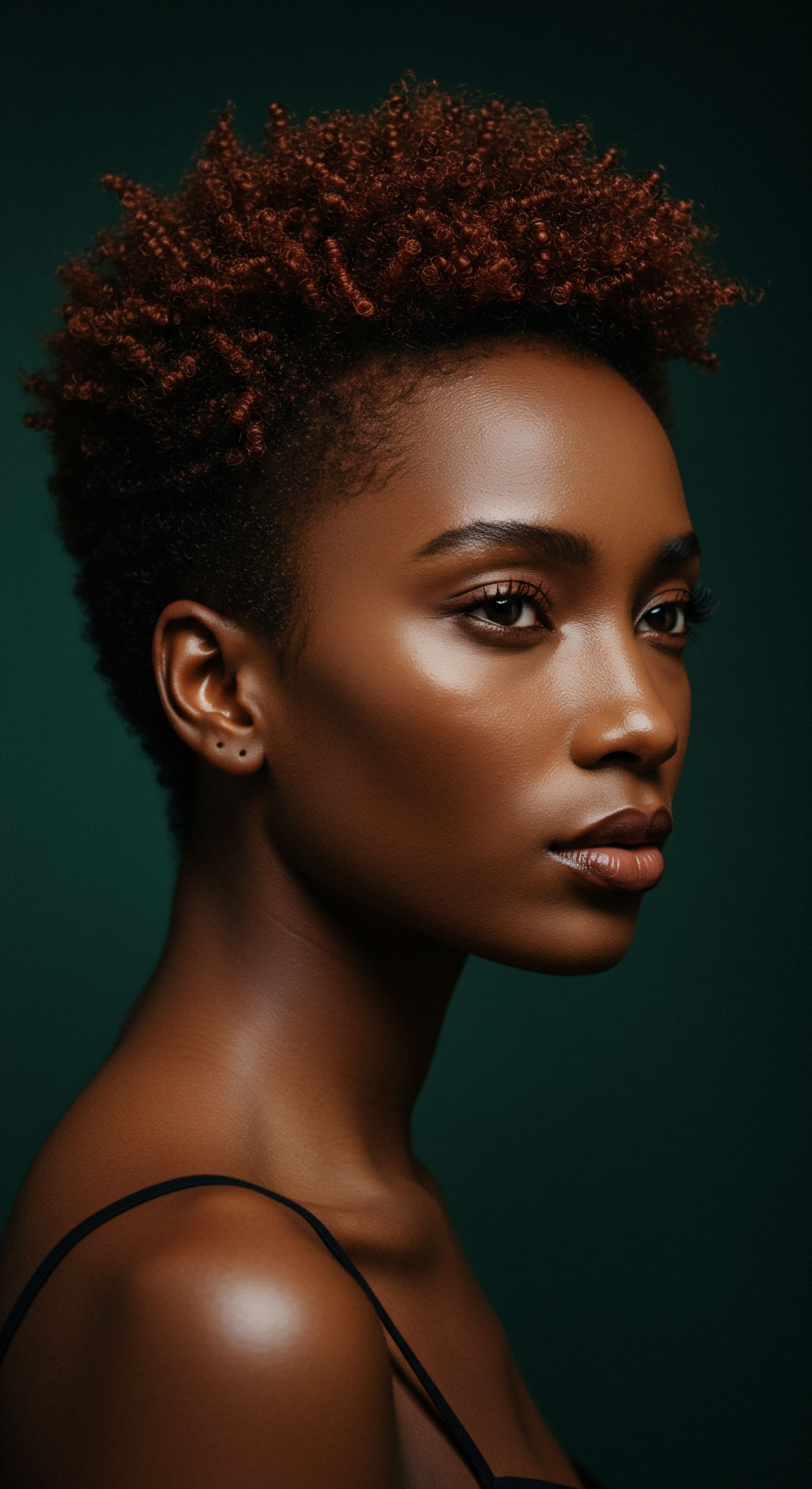
Ingredient Deep Dives for Textured Hair Needs
Traditional hair care often relies on a select range of natural ingredients, each chosen for specific perceived benefits. Modern scientific inquiry allows us to peer into the molecular mechanisms behind these choices. For textured hair, which typically requires more moisture and experiences unique challenges with breakage, certain traditional ingredients stand out for their scientifically verifiable properties.
Consider shea butter, a widely used emollient in African hair care traditions. Chemically, shea butter is rich in fatty acids, including oleic acid and stearic acid, which are excellent at forming an occlusive barrier on the hair shaft. This barrier minimizes trans-epidermal water loss (TEWL) from the hair, effectively sealing in moisture and preventing dryness. Its non-saponifiable components, such as triterpenes and phytosterols, also contribute anti-inflammatory properties, which can soothe an irritated scalp.
Similarly, traditional uses of specific botanical extracts, such as rosemary oil, are finding modern scientific backing. Rosemary oil has been studied for its potential to stimulate hair growth, with some research indicating it may increase microcapillary blood flow to the scalp, thereby enhancing nutrient delivery to hair follicles. This aligns with its historical application in tonics and rinses aimed at improving hair density.
- Shea Butter ❉ Fatty acids create an occlusive barrier, reducing moisture loss.
- Coconut Oil ❉ Antimicrobial properties can help balance scalp fungi.
- Rosemary Oil ❉ May stimulate blood flow to hair follicles, supporting growth.
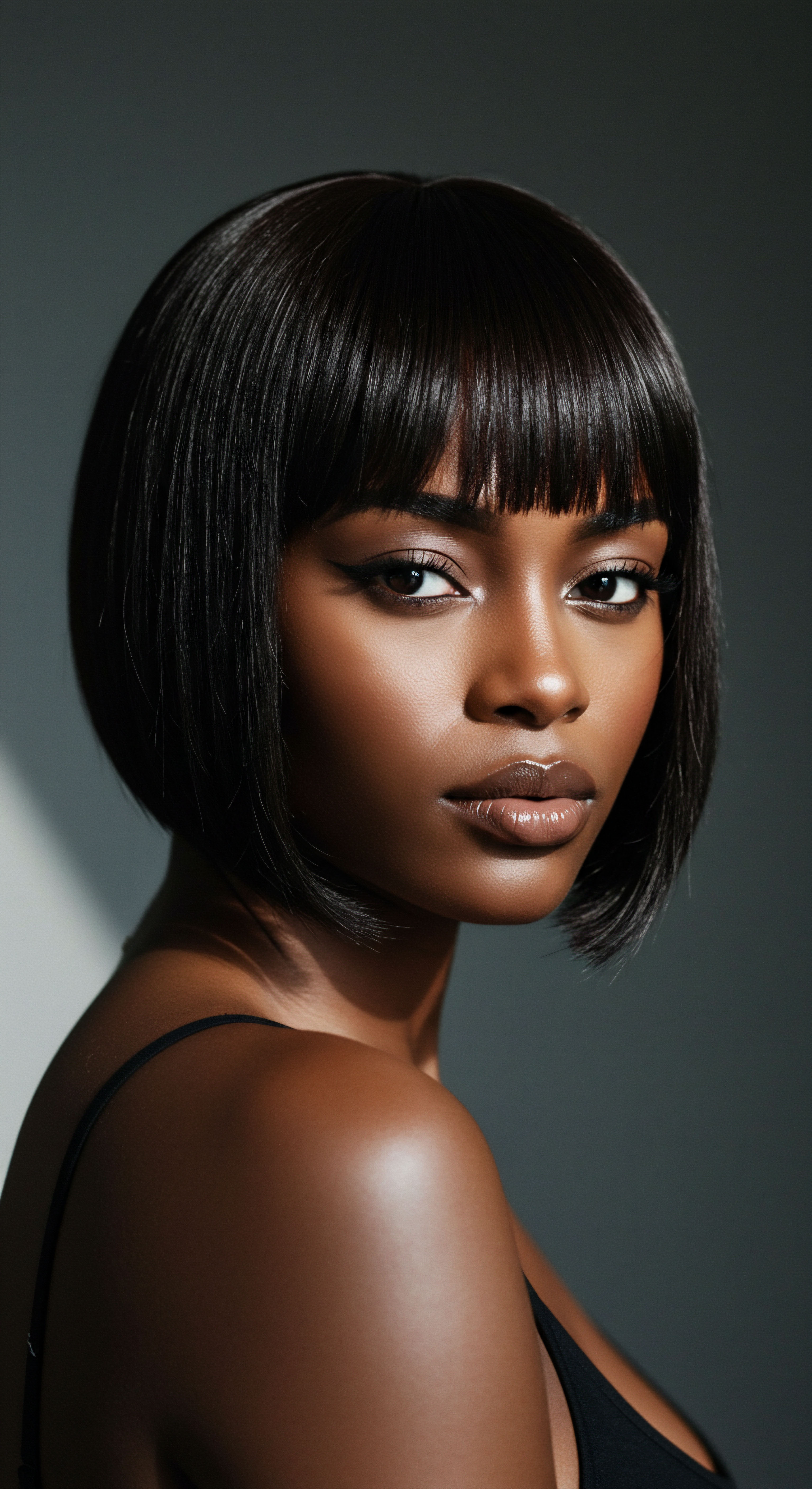
Reflection
The dialogue between ancient wisdom and contemporary scientific understanding reveals a profound symmetry. Traditional hair care practices, born from observation, cultural exchange, and generations of trial, often possess an intuitive scientific validity that modern research is only now articulating with precision. For textured hair, these methods offer more than mere superficial adornment; they represent a deep connection to ancestral knowledge, a celebration of natural beauty, and a pragmatic approach to maintaining scalp vitality.
The principles of minimizing mechanical stress, balancing the scalp microbiome, and nourishing from within are not new discoveries but rather rediscoveries, reaffirmed by the rigorous lens of science. This ongoing conversation invites us to appreciate the richness of inherited practices, viewing them not as relics of the past, but as living traditions, dynamically informed by both heritage and discovery.

References
- Saxena, R. et al. “Comparison of Healthy and Dandruff Scalp Microbiome Reveals the Role of Commensals in Scalp Health.” Scientific Reports, vol. 8, no. 1, 2018.
- Koyama, T. et al. “Standardized Scalp Massage Results in Increased Hair Thickness by Inducing Stretching Forces to Dermal Papilla Cells in the Subcutaneous Tissue.” Eplasty, vol. 16, 2016.
- Hosking, A. M. et al. “Complementary and Alternative Treatments for Alopecia ❉ A Comprehensive Review.” Skin Appendage Disorders, vol. 5, no. 5, 2019.
- Reid, K. et al. “Hair Growth-Promoting Effects of Lavender Oil on C57BL/6 Mice.” Toxicological Research, vol. 30, no. 4, 2014.
- Oh, J. H. et al. “Peppermint Oil Promotes Hair Growth Without Toxic Signs.” Toxicological Research, vol. 30, no. 4, 2014.
- Pouradier, F. et al. “The Scalp Microbiome ❉ A Unique Ecosystem.” International Journal of Cosmetic Science, vol. 39, no. 3, 2017.
- Trüeb, R. M. “Oxidative Stress in Ageing of Hair.” International Journal of Trichology, vol. 2, no. 1, 2010.
- Gavazzoni, M. F. et al. “Botanical Extracts in Dermatology ❉ A Review of the Current State of Research.” Cosmetics, vol. 8, no. 4, 2021.
- Lopiz, C. et al. “Scalp Massage for Hair Growth ❉ A Review of Scientific Evidence.” Journal of Clinical and Aesthetic Dermatology, vol. 12, no. 1, 2019.
- Francesca, L. “Comparative Analysis of Botanical Extracts in the Treatment of Hair Loss ❉ Efficacy and Safety.” Journal of Cosmetology & Trichology, vol. 10, 2024.